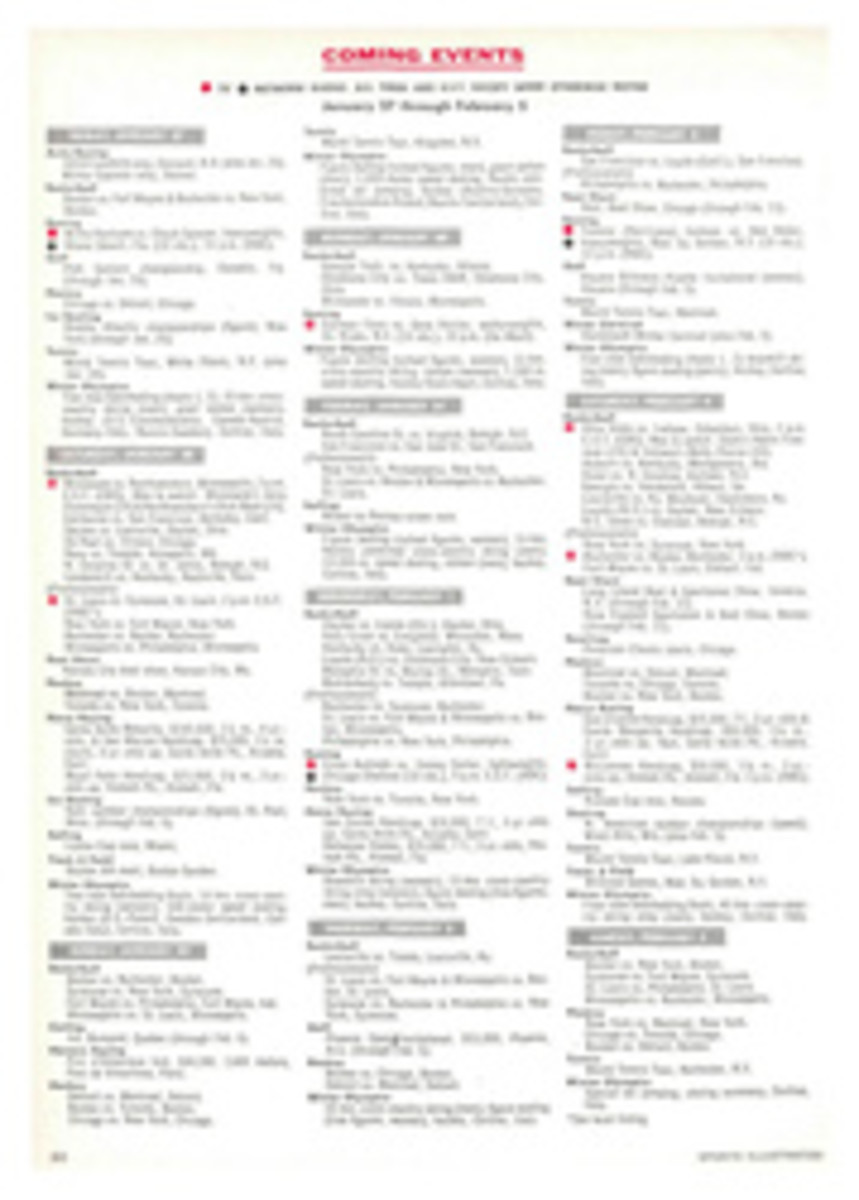
WHILE FRIEDL PFEIFER SEES OUR TEAM THROUGH THE OLYMPICS, STOWE'S SKIMEISTER TAKES OVER WITH ADVICE ON SKIING BUMPS
Faced with a large, unavoidable bump, the reaction of the average beginner is to stiffen and ride over the top, straight-legged, with the result that he often gets tossed in the air. Or he may try to ease over it in a traverse with the equally unfortunate result that the upper ski slides across the lower.
The correct way to take a bump is to come at it fairly straight, staying relaxed so the skis rise and fall under you while the path of your upper body remains at a relatively constant level. You should bend at the knees and hips, not at the waist. Attention must be paid to keeping the skis together, for any bump will tend to split them.
If the beginner or intermediate skier is faced with a series of rolling bumps, it may be necessary for him to turn on one or two of them in order to keep his speed down. The best way is to start your turn as the tips of your skis hit the top of the bump and to swing through the turn on the crest. Then be sure to bring your weight forward quickly to maintain proper angle with your skis on the down side of the bump. Since the tail of the ski is relatively pressure-free as you pass the crest, the turn may be completed with a minimum of body swing.
Frequent and adroit use of your poles is a great help in keeping your balance through a series of bumps.
If you are having trouble taking bumps even using these techniques, it may be that your skis are too stiff. A medium flexible ski is a great advantage on uneven ground.
With the right skis and the correct approach, even steep bumps should give you little trouble.
PHOTO
SEPP RUSCHP

